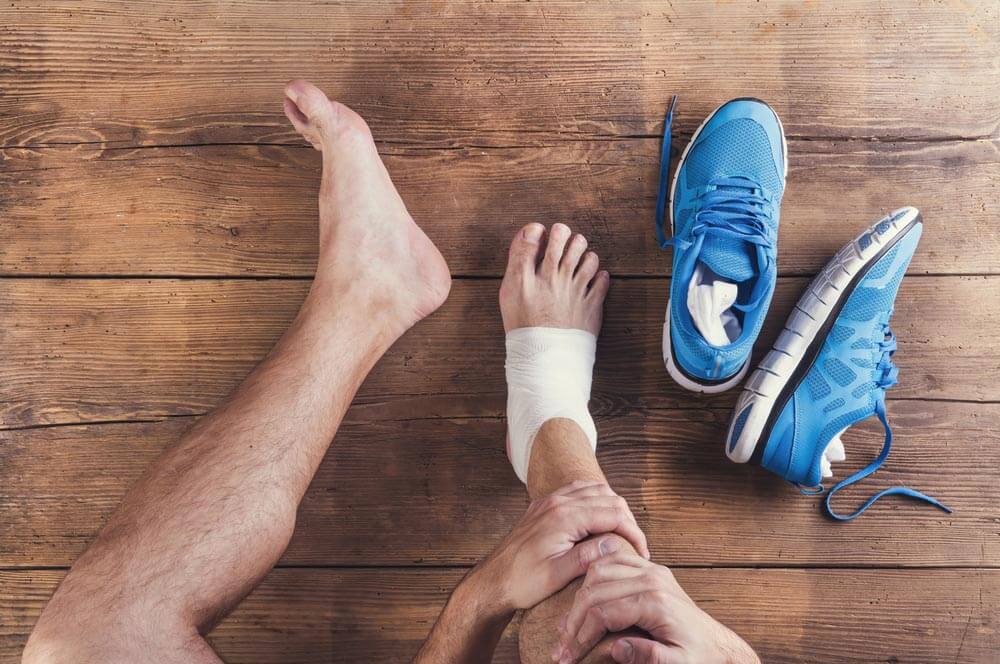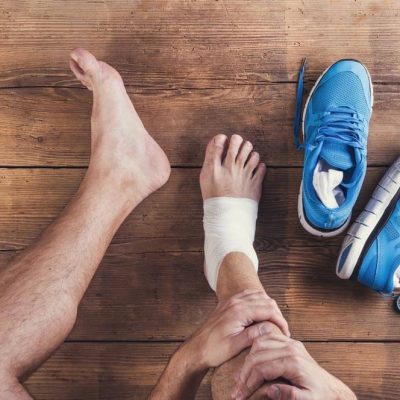Participating in sports is one of the most important activities for physical and mental health, and it’s a great social activity, too. The nature of many popular sports – like footy, rugby, basketball and more – causes a lot of pressure and strain on the body’s muscles, joints, ligaments and bones.
Most Common Sporting Injuries
In this article, we’ll describe the nine most common sports injuries, and explain what you can do to help prevent them.
9. Stress Fracture
A stress fracture is a painful condition defined as a tiny crack in the bone, which is caused by overuse and repetitive force. This is usually a result of exercise intensity being increased too rapidly, preventing the bones from ‘remodelling’ – which is where the bone tissue is destroyed, then rebuilt stronger.
The main symptom of a stress fracture is a steadily increasing point of pain in a small area of your body, gradually increasing to an unbearable severity. The most effective way to prevent this is to gradually increase the intensity of physical activity and specific exercises. This allows time for the body to go through its natural healing processes.
8. Damage to the Teeth
Impact to the jaw and face can often cause teeth to become displaced or chipped, as well as causing swelling, bleeding and damage to the gums. It’s important to travel to a hospital or dentist urgently if you experience these symptoms, as it’s extremely rare for broken teeth to be fixed after three hours.
Protective equipment like mouthguards and helmets are the most effective way of preventing dental injuries, as they provide a layer of padding and protection.
7. Concussion
Concussions involve any trauma to the head which results in the brain hitting the insides of the skull and moving around excessively. This causes vital functions of the brain to be disabled due to damaged brain cells and chemical imbalances.
There are several symptoms to look for after experiencing impact to the head. If the patient is experiencing any of the following problems, a doctor should be seen promptly:
- Headache
- Vomiting
- Fatigue or drowsiness
- Nausea
- Ringing in the ears
- Blurred vision
- Confusion
- Memory loss
- Dizziness
Wearing protective equipment like a helmet is the best way to reduce the risk of concussions.
6. Patellofemoral Syndrome (Kneecap)
Patellofemoral syndrome is the sixth most common athletic injury. This is caused by damage to the kneecap, often as a result of overuse or other injuries. If you have difficulty walking and knee pain increases when climbing stairs or squatting, patellofemoral syndrome is likely to be a cause of this discomfort.
There isn’t much that can be done to eliminate the risk of patellofemoral syndrome, but there are some exercises that, if performed regularly, can reduce the chances of getting it. These exercises include quad stretches and leg extensions.
5. Tearing Your ACL
The ACL (anterior cruciate ligament) is a band of tissue that connects the thigh bone to the shin bone. This ligament can be torn when participating in physical activity that involves sudden stopping and starting, like basketball. This is due to the large amount of pressure and stress these movements place on the ligament.
Often, sufferers will feel a pop in the knee area when the injury occurs. Other symptoms of a torn ACL include extreme pain, swelling, and weakness in the knee. Treatments for this condition include sports massages, rest and compression. Remedial massages can also be a treatment for this condition, so it may interest you to research the pros of remedial versus sports massage.
The risk of a tear can be reduced by performing a few exercises regularly. Core exercises to strengthen the hips, abs and pelvis are recommended by medical professionals. Leg and hamstring stretches can also be very effective.
4. Shin Splints
Shin splints are caused by inflammation of the bone tissue and muscle tendons around the shin bone. These are triggered by a sudden increase in exercise intensity, as well as rolled ankles and tight calf muscles. Running on bumpy, uneven surfaces and using unsupportive footwear can also cause shin splints.
You may experience pain in the top half of the shin. This will usually get worse when running and gradually reduce after stopping, but it never completely goes away.
3. Straining Your Hamstrings
Hamstring strains are the fourth most common of sporting injuries. They’re caused by overloading the hamstring muscle, causing it to tear. This underlying condition can often cause musculoskeletal pain.
This injury is often caused by the lack of an appropriate warm-up routine, as well as inflexibility and weakness in the glutes. Improving these factors of your physical health can reduce the risk of injury. Symptoms include severe pain that comes on suddenly during exercise, often accompanied by a pop or snap in the affected area. Pain in the back of the upper leg and bottom of the buttock can often be a result of a strained hamstring, as along with tenderness and bruising.
2. Tears to the Groin
Sudden, powerful movements like kicks, jumps and twists can cause pressure on the groin, leading it to tear. Pain, bruising and swelling are three regular symptoms of groin tears, as well as snapping sounds occurring at the point of injury. Walking difficulties and weakness in the upper leg are some other indicators. The best way to reduce the risk of this condition is to stretch appropriately before commencing a period of physical activity. Improved flexibility can also reduce the risk.
1. Spraining Your Ankle
Unsurprisingly, the most frequent athletic injury is a sprained ankle. This is caused by a roll or twist of the ankle, resulting in a tear of the tissue connecting your bones. Symptoms include pain, swelling, bruising and tenderness around the ankle, as well as instability and a restricted range of motion in this area. As with many conditions, a proper warm-up can help reduce the risk of injury, along with athletic conditioning and muscle flexibility and strengthening.
What to Do if You’re Suffering From a Common Athletic Injury
The best thing to do if you are experiencing any of the symptoms above is to contact the team at BodyMotion Physiotherapy.
A consultation with our medical professionals will help you discover the treatments needed to reduce the effect of your injury. Get in touch with us to arrange an appointment today.



